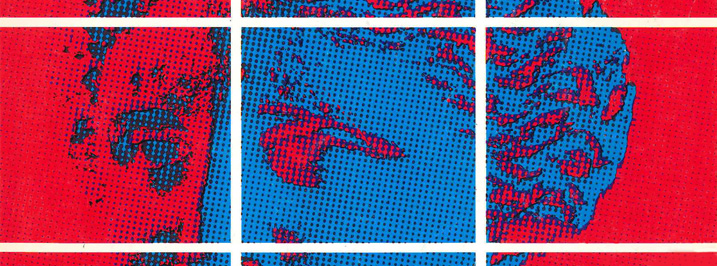
by Paola Moscati
Between June and July of 1983, François Djindjian and Henri Ducasse jointly coordinated the first European postgraduate course on Data Processing and Mathematics Applied to Archaeology, sponsored by the Council of Europe and various French institutions (CNRS, the Ministries of Industry and of Culture, and several Universities). The course took place in the beautiful setting of Southern France, in Valbonne Sophia-Antipolis and Montpellier. More specifically, Sophia-Antipolis was chosen being the headquarters of the Centre de Recherches Archéologiques (CRA), which was established in the early 1970s under the initiative of the French CNRS and the leading guidance of Jean-Claude Gardin.
In 1983, when the course was promoted, CRA had already demonstrated a keen interest in technologies applied to archaeology, resulting in specialised publications such as the newsletter Archéologues et Ordinateurs or the series Panorama des applications informatiques en archéologie, both directed by Henri Ducasse. The European Course started at the Centre in Sophia-Antipolis, at that time directed by Bruno Helly, and was subdivided into two main sections, following a well-balanced agenda, which had been scheduled at least one year before. This preparatory work is evident in the invitation letter to lecturers. The first week was intended to be focused on “Archaeology and Computer Science” and the second one, at the University of Montpellier, on “Mathematics Applied to Archaeology”, following a dichotomous approach that was still permeating archaeological computing.
The course was attended by more than 30 postgraduate students, from all over the world. During the 15 intensive working days – only interrupted by a suggestive excursion to the Camargue during the transfer from Valbonne to Montpellier – students attended lectures and practical classes given by scholars and professionals. Still today, the list of lecturers offers a lively spectrum of major European institutions promoting and disseminating computer applications in archaeology.
From a historical perspective, the Course represents one of the earliest European events that brought together and encouraged scholars to dynamically participate not only in the theoretical debate but also in the academic teaching and dissemination of archaeological computing. Few names suffice to illustrate the high level of expertise: Amilcare Bietti, François Djindjian, Peter Ihm, and Albertus Voorrips for statistical applications in archaeology, Anne-Marie Guimier-Sorbets and Bernard Toulier for the creation of scholarly databases and the automated inventory of cultural heritage, Emilio Barisano e Irwin Scollar for remote sensing techniques, Jean-Claude Gardin and Alain Gallay for the formalisation of archaeological reasoning, James Doran and Stephen Shennan for modelling, simulation and sampling techniques.
Main educational sessions introduced students to specific thematic areas. The first week dealt with remote sensing, image processing, field work, data banks, laboratory analyses, and expert systems, with a focus on data processing. The second week addressed elementary statistics, sampling techniques, seriation, spatial analysis, and modelling, with a focus on quantitative analyses. Workshops were also organised. CRA provided a local area network using Apple II microcomputers, while in Montpellier the computer centre was equipped with an IBM 3033 and multiple terminals.
Students were thus capable of experiencing some of the earliest information systems customised for archaeological purposes and also working on microcomputers. For example, SIGMI/SIGMINI, a documentary system designed by the Ecole des Mines de Paris and tested in the design and implementation of archaeological databases, such as the one dedicated to Greek mosaics; SNARK, an expert system used by Gardin’s research team as an intelligent knowledge-based approach for performing the computer simulation of archaeological reasoning; Centrar, an information management system for data processing in archaeological excavations tested on the Levroux site; Ispahan, an interactive pattern recognition system used in the classification of Upper Paleolithic stone tools. Internet was not yet born, but data exchange between information retrievers and providers was adequately supported by the videotex communication system.
About ten years later, Djindjian and Ducasse published some of the contents of the Course in the 16th issue of the Journal «Pact», directed by Tony Hackens and published by the European University Centre for Cultural Heritage in Ravello. As clearly stated in the Preface by Bruno Helly and in the wide-ranging Introduction by François Djindjian, the time elapsed had been marked increasingly by improvements in technology rather than by advances in theory and methods. Indeed, even today, the memory of some practical exercises is still vivid, such as those directed by M.-S. Lagrange and M. Renaud. They were meant to guide students in figuring out interpretations of Greek mythological scenes and, by means of the expert system SNARK, simulating the interpretive process in order to encourage critical thinking on the formation and formalisation of archaeological constructs. They still represent an exemplary bridge between the first “codes” produced by Jean-Claude Gardin in the 1950s and the long and fruitful work aimed at the computerisation of archaeological corpora.
VMAC – 2016